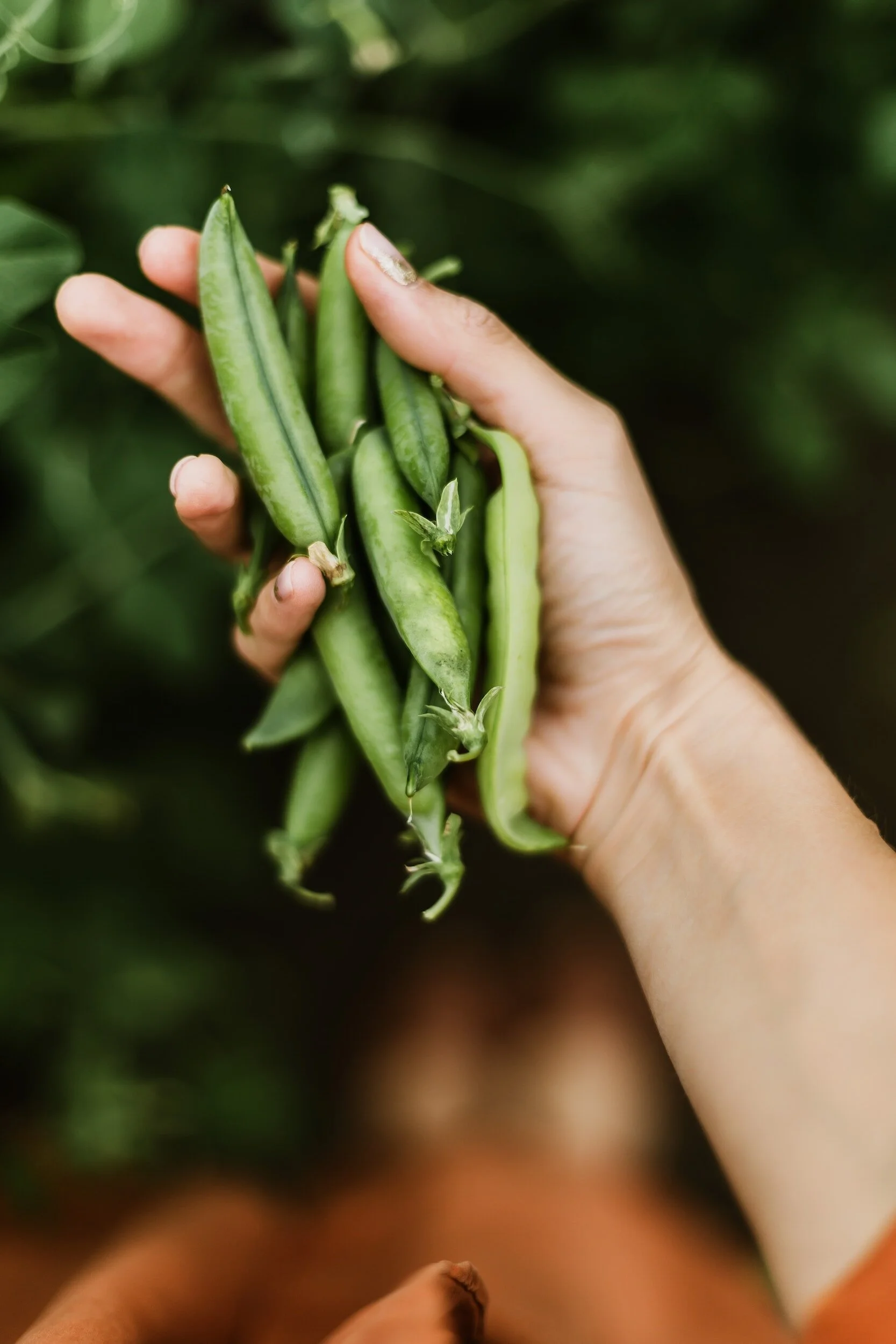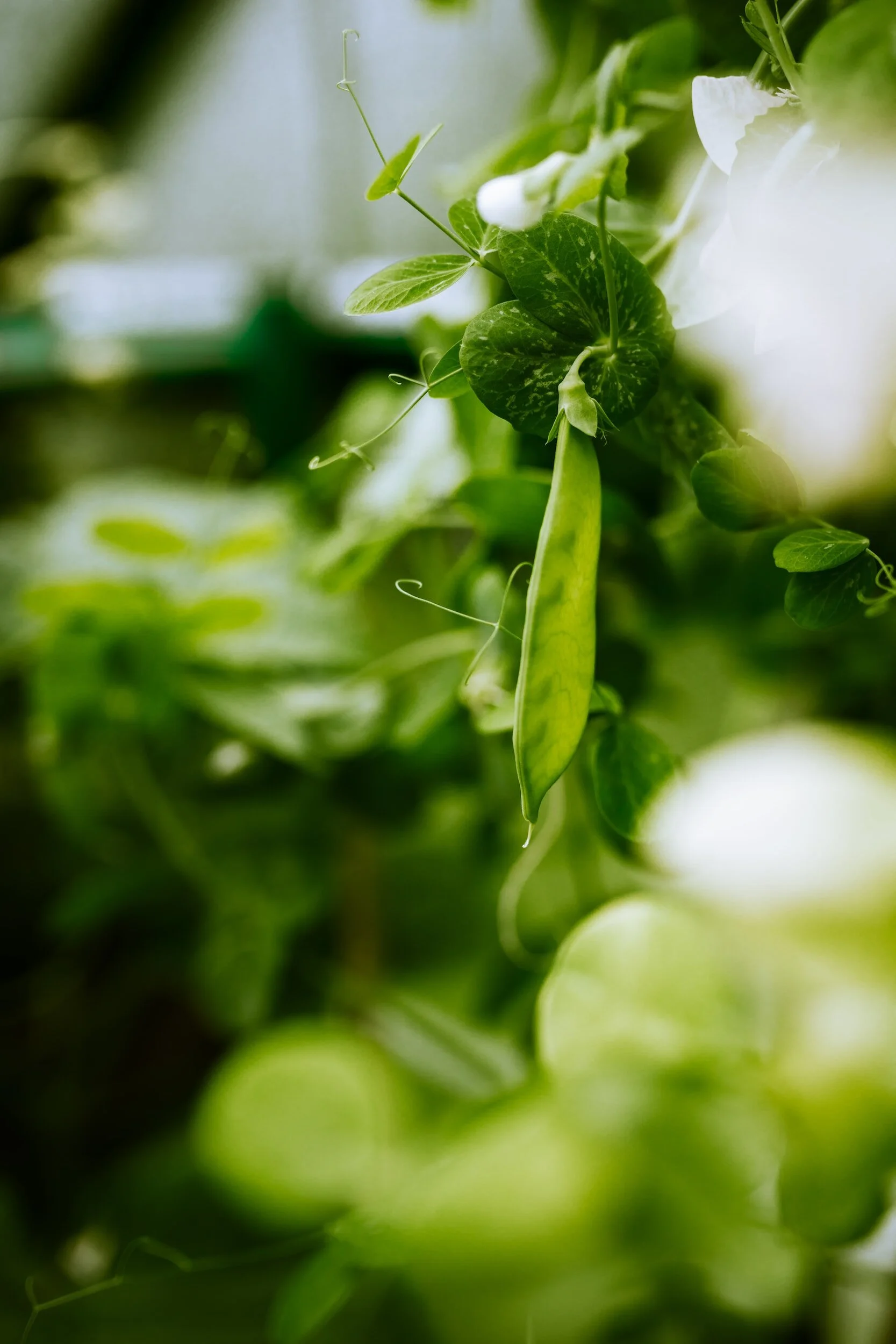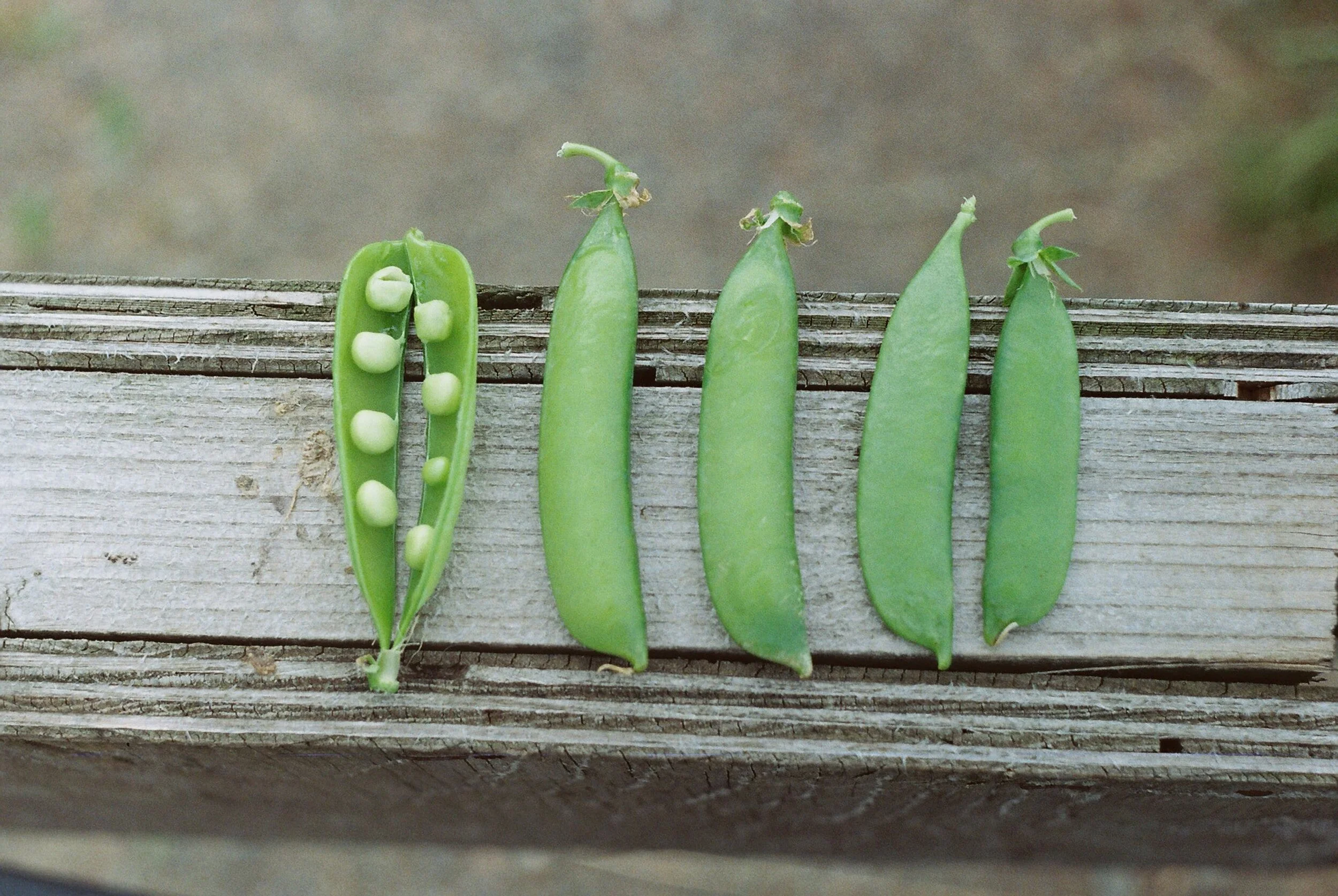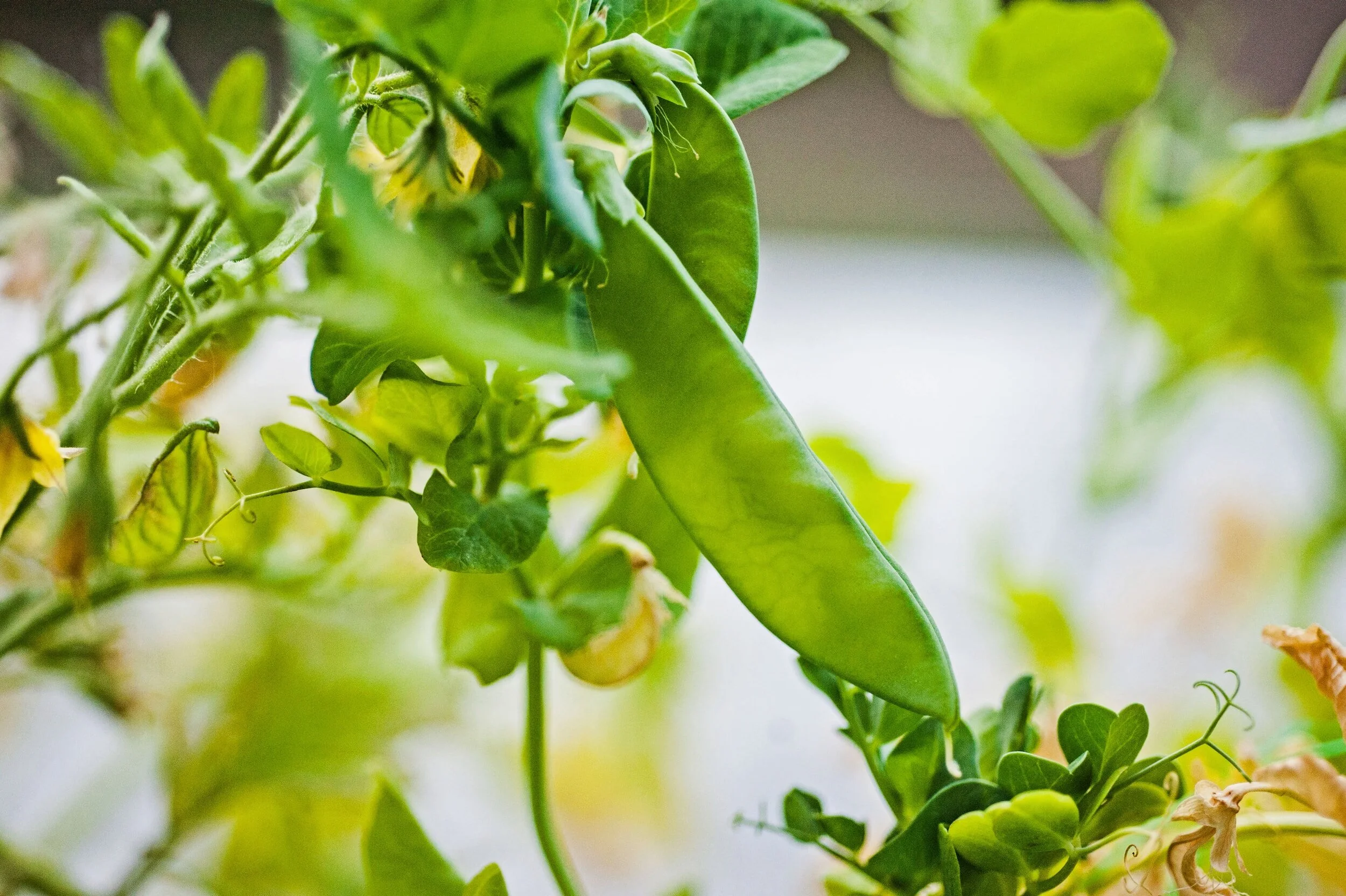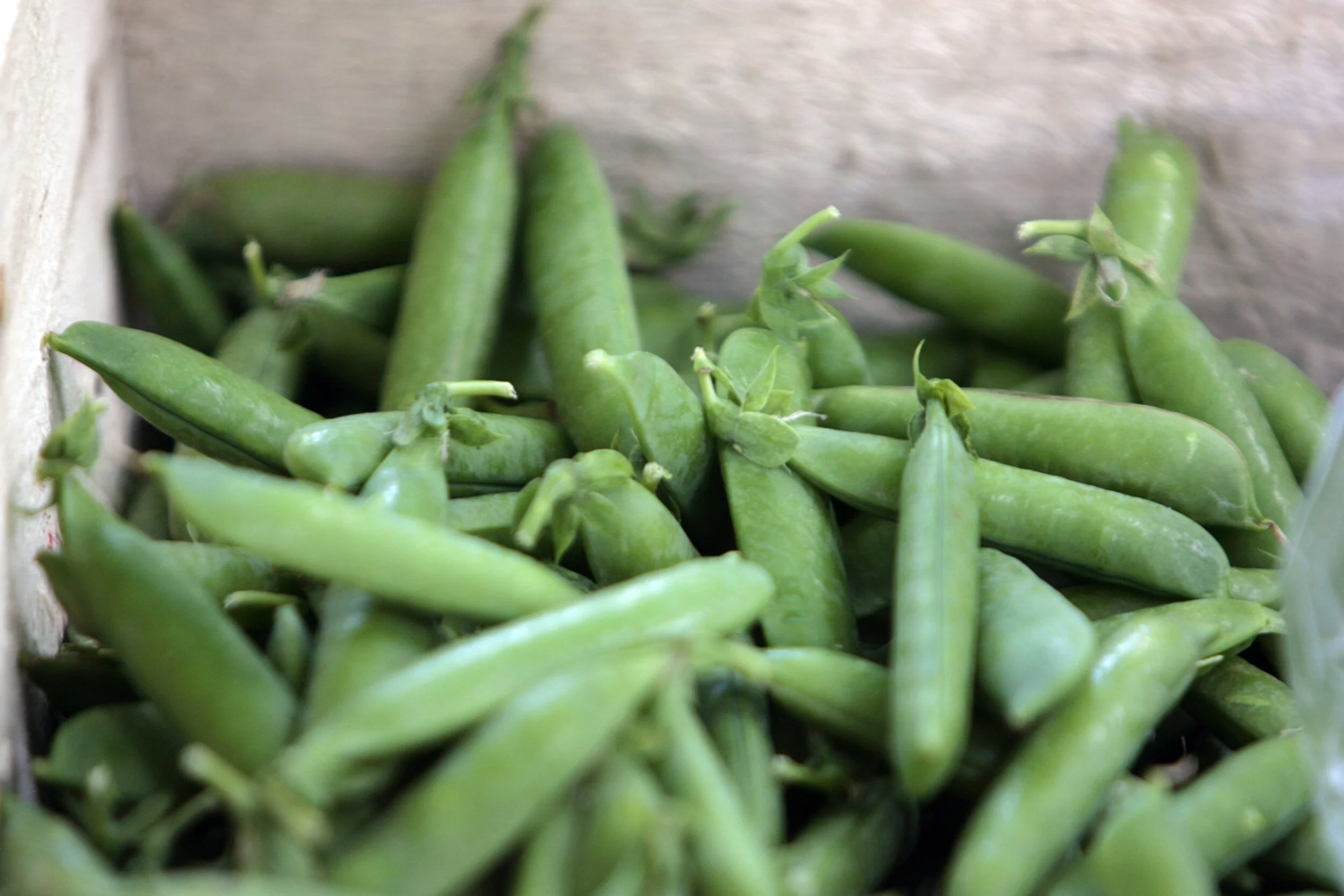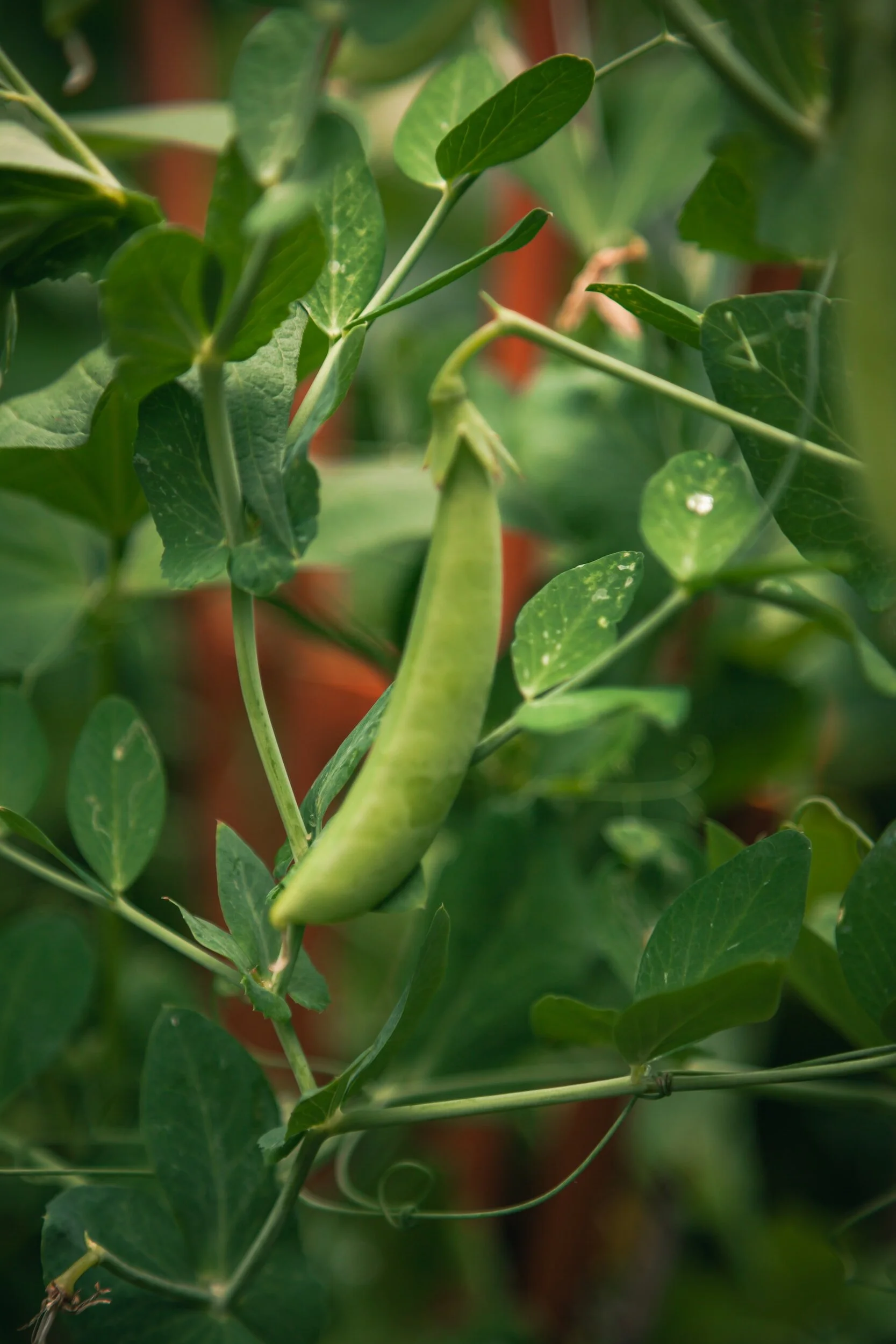The Ultimate Guide to Growing Peas in Pots
This article has links to products that I may make commission from.
If you've ever thought about turning your balcony or patio into a mini-green oasis, growing peas in pots is a fantastic way to start.
This guide will walk you through the surprisingly simple process of cultivating these delightful veggies, no matter the size of your space.
From choosing the best pea varieties to harvesting your very own sweet pods, we've got you covered.
Let's dig into the world of container gardening and see just how easy and rewarding growing peas can be.
To learn more about growing peas, check out my guide:
Companion Planting with Peas: Maximizing Your Garden's Potential
Choosing the Right Peas for Your Pots
Growing peas in containers is an excellent way to enjoy fresh produce, even with limited space.
The key to success lies in selecting the right varieties and understanding their specific needs.
Understanding Pea Varieties:
Sugar Snap Peas:
Known for their sweet, edible pods, sugar snap peas are a great choice for container gardening.
They are generally hardy and can be harvested when the pods are plump.
Here are the ones I recommend growing:
Snow Peas:
These are flat-podded peas, often used in Asian cuisine.
Snow peas are harvested when the pods are still flat, and the peas inside are just beginning to swell.
Here are the ones I recommend growing:
Little Marvel and Other Shelling Peas:
These varieties produce peas that are removed from the pod before eating.
Little Marvel is a compact variety, making it an ideal choice for pots and containers.
Here are the ones I recommend growing:
Garden Peas:
Traditional garden peas, or English peas, are also suitable for containers.
They require shelling before eating, and their sweet taste is best when freshly picked.
Here are the ones I recommend growing:
Selecting the Best Varieties for Containers:
When choosing pea varieties for container gardening, consider factors like the growth habit of the plant (bush or climbing types) and the size of the pods.
Dwarf or bush varieties are often preferred for containers as they require less support.
Varieties like 'Sugar Ann' and 'Tom Thumb' are excellent for container gardens due to their compact size and minimal need for staking.
Here are the ones I recommend:
For more planting tips, check out my guide:
Consider the Growing Season:
Peas are cool-season crops and can be planted in early spring or late summer for a fall harvest.
It's important to select a variety that matches your local growing season.
In warmer climates, choose heat-tolerant varieties to ensure they can withstand higher temperatures.
Seed Viability and Quality:
Always opt for high-quality pea seeds from reputable sources to ensure good germination and healthy plant growth.
It's advisable to check the expiration date on seed packets.
Fresh seeds have a higher germination rate, which is crucial for container gardening where space is limited.
By understanding the different types of peas and their specific needs, you can select the best varieties for your container garden.
This will lead to a bountiful harvest of sweet, crisp peas right from your balcony or patio.
For more container gardening tips, check out my guides:
Growing Lettuce in Containers: A Beginner's Guide
Selecting and Preparing Your Containers
Successful pea growing in pots hinges on choosing the right containers and preparing them properly.
This section provides detailed guidance on both aspects.
Choosing the Right Containers:
For peas, containers should be at least 10-12 inches deep.
This depth is crucial for allowing the roots to grow freely and access the nutrients they need.
The width of the container will depend on the number of plants you wish to grow.
A general rule is to allow about 2-3 inches of space per plant.
Here is the pot I recommend for growing peas:
Drainage is Key:
Ensure your containers have adequate drainage holes to prevent waterlogging, which can lead to root rot.
If your chosen container doesn’t have holes, drill some at the bottom.
Placing a layer of gravel or broken pottery pieces at the bottom can further improve drainage.
Preparing Your Container for Planting:
Potting Mix:
Use a high-quality potting mix rather than garden soil. Potting mixes are formulated to provide the right balance of drainage and water retention for container plants.
They also tend to be lighter and less likely to compact, ensuring good root growth.
Here is the potting soil I recommend for growing peas in pots:
Nutrients:
Consider mixing in a slow-release fertilizer with your potting mix before planting.
Peas don't require a lot of extra nutrients, but a little boost can help them get a good start.
Here is the slow-release fertilizer for peas that I recommend using:
Location and Mobility:
Peas need full sun, so place your containers in a location where they will receive at least 6-8 hours of sunlight daily.
If your outdoor space receives varying amounts of sunlight throughout the day, consider using containers with casters or a plant caddy.
This allows you to move the plants to optimize their sun exposure.
Here is the plant caddy that I love:
Preparing for Growth:
Since some pea varieties can grow quite tall, it's wise to think about support structures like trellises or stakes at the planting stage.
Setting them up early avoids disturbing the plant's roots later on.
Here are the supports for growing peas in pots that I recommend using:
By carefully selecting and preparing your containers, you create a solid foundation for your pea plants to thrive.
This ensures that your container pea garden will not only be productive but also a visually appealing addition to your balcony, patio, or other outdoor spaces.
Grow more veg in containers with my guides:
Planting and Caring for Your Pea Plants
This section covers the essential steps and care tips for planting pea seeds in containers and ensuring their healthy growth throughout the season.
Planting Your Pea Seeds:
Timing:
The ideal time to plant peas is early spring or late summer.
They prefer cooler temperatures and can even tolerate light frosts.
Seed Depth and Spacing:
Plant pea seeds about 1-1.5 inches deep and 2 inches apart in the soil.
If planting multiple rows in a large container, leave about 6 inches of space between each row.
Watering After Planting:
Water the seeds gently but thoroughly after planting.
The soil should be moist, not waterlogged.
Germination and Early Care:
Germination Period:
Pea seeds typically germinate within 7-14 days, depending on the soil temperature and conditions.
Thinning Seedlings:
If all your seeds germinate, you might need to thin the seedlings to prevent overcrowding.
This involves gently removing some seedlings to ensure adequate space for the remaining plants.
Watering and Feeding:
Watering Needs:
Peas need consistent moisture, especially when the plants are flowering and developing pods.
Water regularly to keep the soil consistently moist but avoid overwatering.
This is my favorite watering can for the job.
For more watering tips, check out my guide How Often to Water Seedlings.
Fertilizing:
Peas generally don't require much fertilizer, especially if you've mixed a slow-release fertilizer into the potting mix.
Over-fertilizing can lead to lush foliage at the expense of pod production.
Sunlight and Temperature:
Sunlight Requirements:
Peas need full sun to produce well. Ensure they receive at least 6 hours of direct sunlight daily.
Temperature Considerations:
While peas thrive in cooler temperatures, extreme cold or heat can affect their growth. In areas with very hot summers, provide some afternoon shade to protect the plants.
Pest and Disease Management:
Common Pests:
Watch out for pests like aphids and pea weevils. Regular inspections and prompt action (like using insecticidal soap) can mitigate these issues.
Disease Prevention:
Good air circulation is crucial for preventing fungal diseases. Avoid overcrowding and water at the soil level rather than overhead to keep the foliage dry.
Supporting the Plants:
Staking or Trellising:
For climbing pea varieties, provide support like a trellis, stakes, or a tomato cage. This encourages vertical growth and makes harvesting easier.
Regular Monitoring and Maintenance:
Regularly check your plants for any signs of stress, pests, or diseases. Also, remove any weeds that may compete with your peas for nutrients and water.
By following these planting and care guidelines, you can enjoy a thriving pea garden right in your containers. Regular attention and care will lead to a rewarding harvest of fresh, tasty peas.
Grow more in pots with my guides:
Supporting Your Growing Peas
Providing proper support for your pea plants is crucial, especially for climbing varieties.
This section offers detailed advice on how to effectively support peas in containers to promote healthy growth and maximize yields.
Understanding the Need for Support:
Peas, particularly climbing varieties like sugar snap peas and some snow peas, naturally grow upwards and need something to cling to.
Support structures help in keeping the plants upright, ensure they receive adequate sunlight, and facilitate easier harvesting.
Types of Supports:
Trellises:
These are ideal for container-grown peas. A trellis can be made of wood, metal, or netting and should be inserted into the container at planting time to avoid damaging the roots later.
The height of the trellis should match the expected growth of the pea variety.
Here is the trellis I recommend:
Stakes:
Simple stakes can work well for bush-type peas or shorter vine varieties.
Place stakes at regular intervals and gently tie the pea plants to them as they grow.
Here are the stakes I recommend:
Tomato Cages:
These can be repurposed for peas. They offer a ready-made structure for the plants to climb on, and their circular design fits well into pots.
Here are the tomato cages I recommend:
Installing the Supports:
Position the support structure in the pot before or at the time of planting to avoid disturbing the roots later.
If using a trellis or stakes, ensure they are securely anchored in the soil to support the weight of the plants as they grow.
Training the Peas:
Peas have tendrils that naturally reach out and wrap around nearby supports.
Occasionally, you might need to gently guide the plants onto the support or loosely tie them with soft ties or twine.
Maintenance of Support Structures:
Regularly check the stability of your support structures, especially after heavy winds or rain.
Make sure they remain firmly in place and adjust or reinforce as necessary.
As the plants grow, they might need additional guidance or tying, particularly if they start to lean or outgrow their initial support.
Space Management:
For climbing varieties, ensure there's enough space between the plants and the support structure for air circulation and ease of harvesting.
This also helps in reducing the risk of disease.
By providing sturdy and well-positioned support for your pea plants, you not only encourage healthier and more vigorous growth but also make maintenance and harvesting easier.
Whether you choose trellises, stakes, or tomato cages, the right support structure can significantly enhance the success of your container-grown peas.
For more container gardening inspiration, check out my guides:
Maintaining and Harvesting Your Peas
Proper maintenance and timely harvesting are key to ensuring a bountiful and quality yield of peas from your container garden.
This section provides detailed insights into the care required throughout the growing season and how to harvest your peas for the best flavor.
Regular Maintenance for Healthy Growth:
Watering: Keep the soil consistently moist but not waterlogged. Peas prefer regular, even watering, especially during flowering and pod formation.
For more watering tips, check out my guide How to Use Watering Globes.
Mulching: Apply a thin layer of organic mulch around the base of the plants. This helps retain soil moisture, suppress weeds, and regulate soil temperature.
Check out my guide The Best Alternatives to Traditional Mulch for Your Garden.
Monitoring for Pests and Diseases: Regularly check your plants for signs of pests like aphids or diseases such as powdery mildew. Prompt treatment with appropriate organic or chemical controls can mitigate these issues.
Removing Weeds: Keep the container free of weeds to prevent competition for nutrients and water.
Checking Support Structures: Ensure that trellises, stakes, or cages are secure and provide additional support or adjustment as the plants grow.
Knowing When to Harvest:
Harvest Timing: The right time to harvest depends on the pea variety. Snap and snow peas are best picked when the pods are plump but before the peas inside grow too large.
For shelling peas, wait until the pods are fully swollen.
Frequent Harvesting: Regular harvesting encourages the plant to produce more pods. Check your plants every 1-2 days once they start producing pods, as peas can quickly become overripe.
How to Harvest:
Harvesting Technique: Gently hold the vine with one hand and pick the pods with the other to avoid damaging the plant. Snapping or cutting the pods off at the stem is usually the safest method.
Harvest Size: For snap and snow peas, the pods should be about 2-3 inches long. For shelling peas, the pods should feel full and firm to the touch.
Post-Harvest Care:
After the final harvest, you can cut the plants at soil level and leave the roots in the pot to decompose.
Pea roots have nodules that fix nitrogen in the soil, enriching it for your next planting.
Clean and store your support structures for future use.
Enjoying Your Harvest:
Peas are best enjoyed fresh but can also be blanched and frozen for later use. Fresh peas can be added to salads, stir-fries, or simply enjoyed raw.
By adhering to these maintenance and harvesting guidelines, you can ensure that your container-grown peas remain healthy throughout the season and yield a delicious crop ready to be savored in your favorite dishes.
Grow even more in containers with my guides:
Troubleshooting Common Issues
Even with the best care, you may encounter some challenges while growing peas in containers.
This section addresses common issues and offers solutions to keep your pea plants healthy and productive.
Problem: Poor Germination
Causes and Solutions: Poor germination can be due to old or low-quality seeds, incorrect planting depth, or unsuitable soil temperature.
Ensure you use fresh, high-quality seeds, plant them at the right depth (about 1-1.5 inches), and in conditions that peas favor (cool and moist).
Problem: Yellowing Leaves
Causes and Solutions: Yellow leaves can indicate overwatering, poor drainage, or nutrient deficiencies.
Ensure your pot has good drainage and adjust your watering routine.
A balanced, slow-release fertilizer can help address nutrient issues.
Here is the one I recommend:
Problem: Leggy or Weak Plants
Causes and Solutions: This is often due to inadequate light. Peas need full sun to thrive.
If your plants aren't getting enough light, consider moving them to a sunnier spot or using grow lights if indoor lighting is insufficient.
Here are the grow lights I recommend:
Problem: Pests Like Aphids and Spider Mites
Solutions: Regularly inspect your plants for pests.
If you notice aphids or spider mites, you can remove them with a strong jet of water or use insecticidal soap.
Here is the insecticidal soap I recommend:
Natural predators like ladybugs can also be introduced as a biological control method.
Problem: Diseases Like Powdery Mildew or Root Rot
Causes and Solutions: Fungal diseases are often due to high humidity and poor air circulation. Ensure there's enough space between plants for air to circulate.
For root rot, improve drainage and avoid overwatering. Fungicides can be used for severe cases of powdery mildew.
Problem: Peas Not Flowering or Producing Pods
Causes and Solutions: This can be due to too much nitrogen in the soil, excessive heat, or inadequate sunlight.
Avoid high-nitrogen fertilizers and ensure your plants receive sufficient light and cooler temperatures.
Problem: Drooping or Wilting Plants
Causes and Solutions: This is often a sign of under-watering or over-watering.
Check the soil moisture and adjust your watering accordingly. In hot weather, additional watering may be necessary.
Problem: Stunted Growth
Causes and Solutions: Stunted growth can result from overcrowding, poor soil conditions, or insufficient nutrients.
Ensure adequate space for each plant and use a quality potting mix. A balanced fertilizer can help promote growth.
By understanding these common issues and their solutions, you can effectively troubleshoot problems in your pea container garden. Regular monitoring and timely intervention can help keep your plants healthy and productive throughout the growing season.
For more inspiration, check out my guide:
FAQs
How Many Pea Plants Per Container?
The number of pea plants per container depends on the size of the pot and the variety of peas.
For standard-sized containers (about 12 inches in diameter), you can plant 3-4 pea plants. Ensure there's enough space for each plant to grow without competing for nutrients and sunlight.
Overcrowding can lead to poor air circulation and increased susceptibility to diseases. Here is the pot I recommend for growing peas.
Can You Grow Peas from Frozen Peas?
Growing peas from frozen peas is not viable because the freezing process damages the embryos inside the peas, rendering them incapable of germination.
For successful growth, it's essential to use fresh, viable pea seeds from a garden center or seed supplier. Here are my favorite pea seeds.
Best Peas for Containers?
The best pea varieties for containers are typically dwarf or bush types due to their compact growth habit. Varieties like 'Sugar Ann', 'Little Marvel', and 'Tom Thumb' are excellent choices.
These varieties require less space and support, making them ideal for container gardening.
Growing Peas in Containers in Different Climates?
In cooler climates, plant peas as early as the soil can be worked for a spring harvest. In warmer regions, opt for heat-tolerant varieties and consider providing some afternoon shade to protect the plants from intense heat.
In climates like the UK, where summers are mild, most pea varieties will thrive.
Conclusion
As we've explored, growing peas in pots is a rewarding endeavor for any gardener. Whether you choose a raised bed or simple containers, the journey from potting soil to flourishing vines is both enjoyable and fulfilling.
By choosing the right variety and providing the appropriate care, you can successfully grow peas even in limited spaces. The satisfaction of harvesting home-grown peas, nurtured from a mere seed in a pot to a bountiful vine, is unmatched.
So, embrace the simplicity and joy of growing peas in pots, and you'll be delighted by the sweet rewards of your gardening efforts.
Want to learn more about container gardening? Check out my guides:






